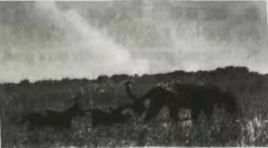
Many of us stayed at home in January because ofCOVID-19, but a special mom and her two babies took a trip. They were driven a few miles from a breeding center in northeastern Argentina to a 1.7 million-acre nature reserve called Gran Ibera Park. There the three jaguars were released into the wild.
Their release was the first reintroduction of jaguars in that part of Argentina since the species (物种) almost died out there 70 years ago. Scientists hope they can turn things around for this important apex predator, meaning one that is on top of the food chain (链). Only 200 to 300 jaguars remain in the country.
"That is the highest level of protection that can be given in Argentina," says Sebastian Di Martino. He's the conservation director for Rewilding Argentina, which is one of the organizations helping to restore jaguar populations.
The jaguars' journey started in 2018 when the park was built in the Ibera Wetlands. Several thousand jaguars once lived there, along with other important species. But the jaguars' fur was valuable, so people hunted them. Then farmers cleared the land they lived on. With the jaguars gone, the ecosystem was out of balance.
"In the absence of this species, ecosystems stop working well and may even collapse," Di Martino says. "The main prey (猎物) of the jaguar is the capybara and the caiman. They are very abundant because of the absence of the jaguar, which causes imbalances in the ecosystem."
The park was the first step to give jaguars a place to live. Then they needed to breed. A female named Mariua mated with a male jaguar from Brazil. Mariua then gave birth to the two baby jaguars.
It sounds simple, but the reality is more complicated. Di Martino said that jaguars born at breeding centers have to learn how to hunt and must not become used to humans. Otherwise, they will not have success in the wild.
The people who work at the breeding center stay out of sight. They use video cameras to watch the jaguars from several miles away."We provide live prey for them, without them realizing it comes from people," Di Martino said.
Mariua wears a radio collar so researchers can track her and her babies, Karai and Pord. "So far, so good. She's been hunting capybaras and wild pigs and is raising her babies very well," Di Martino says.